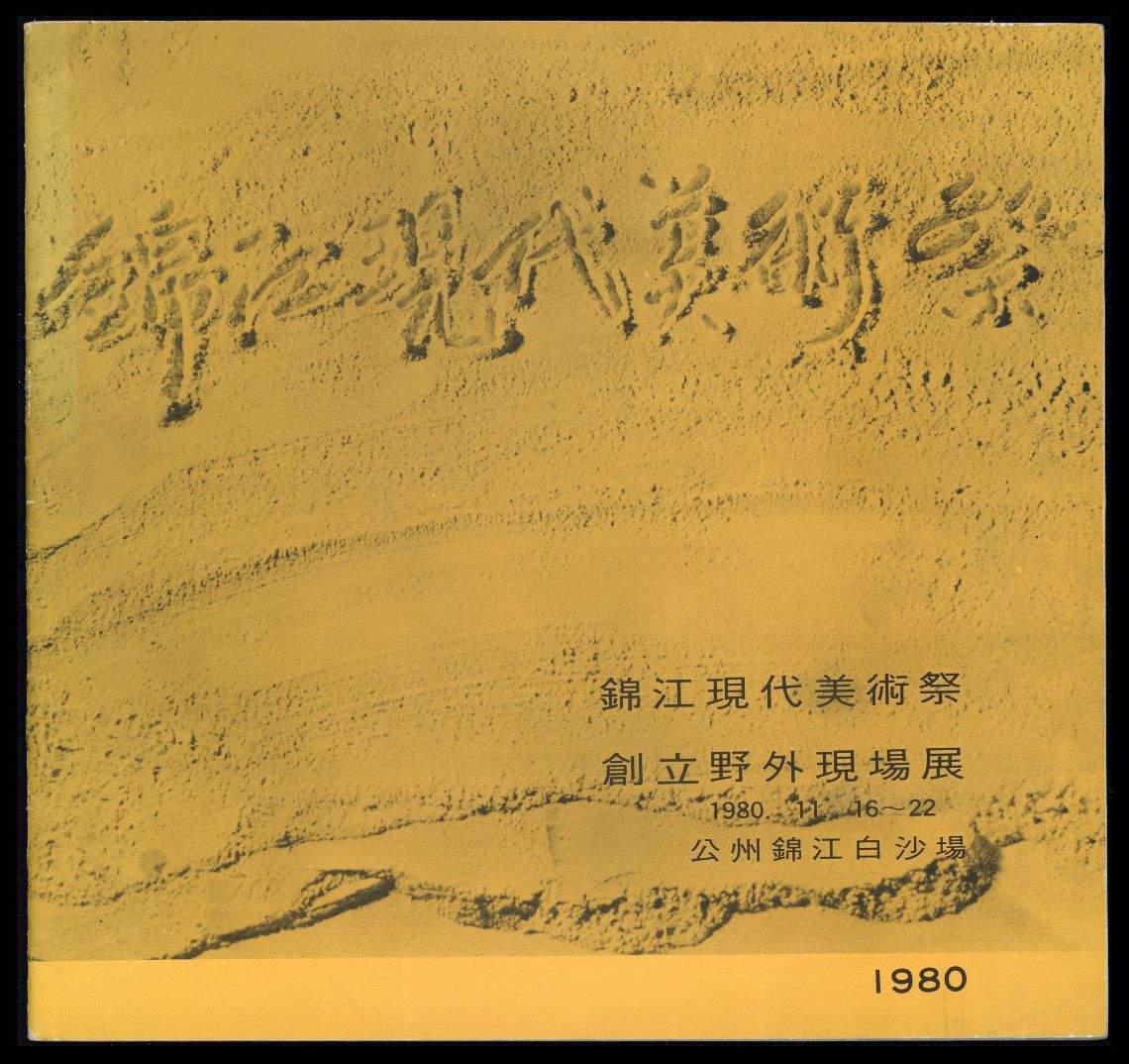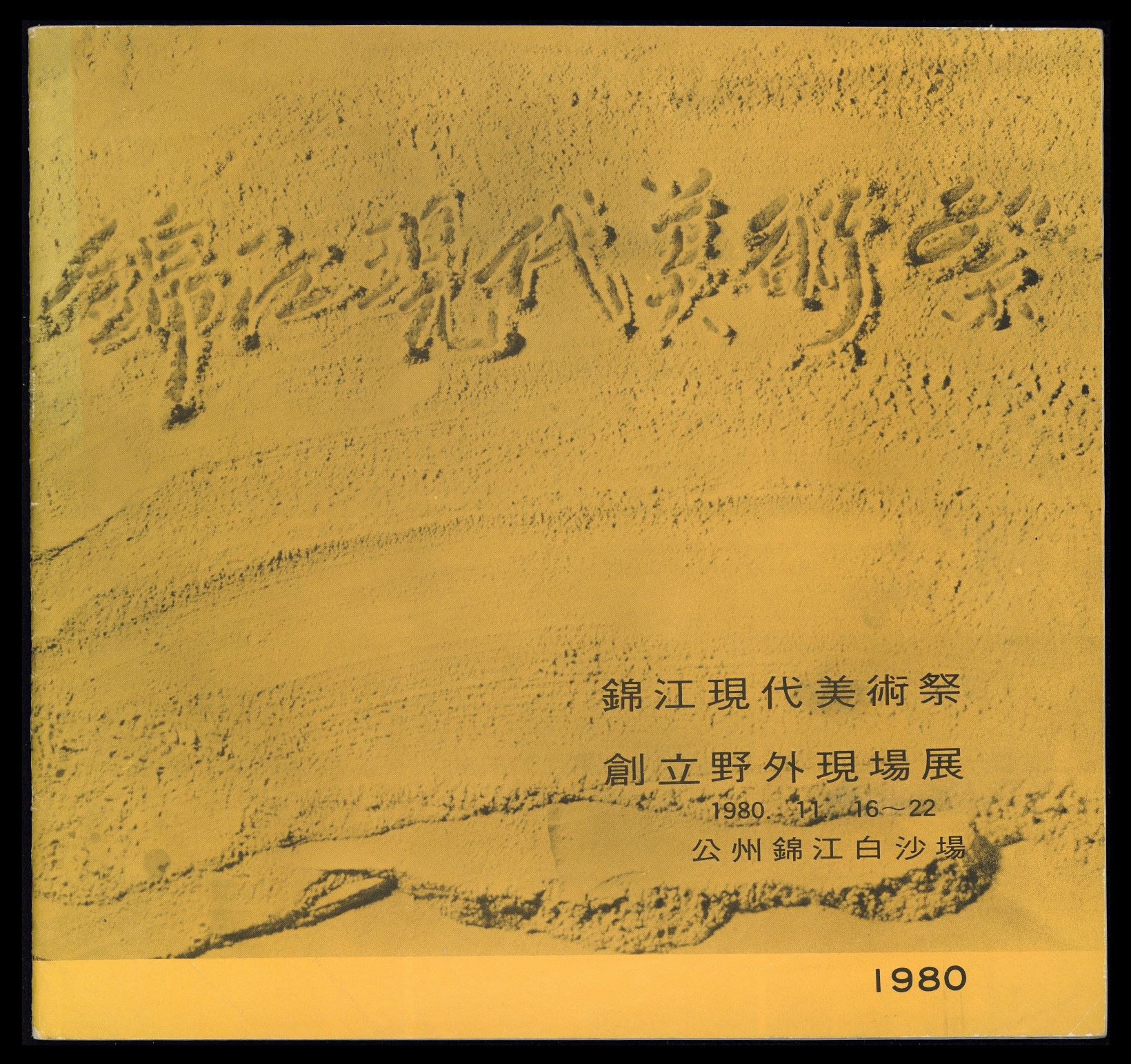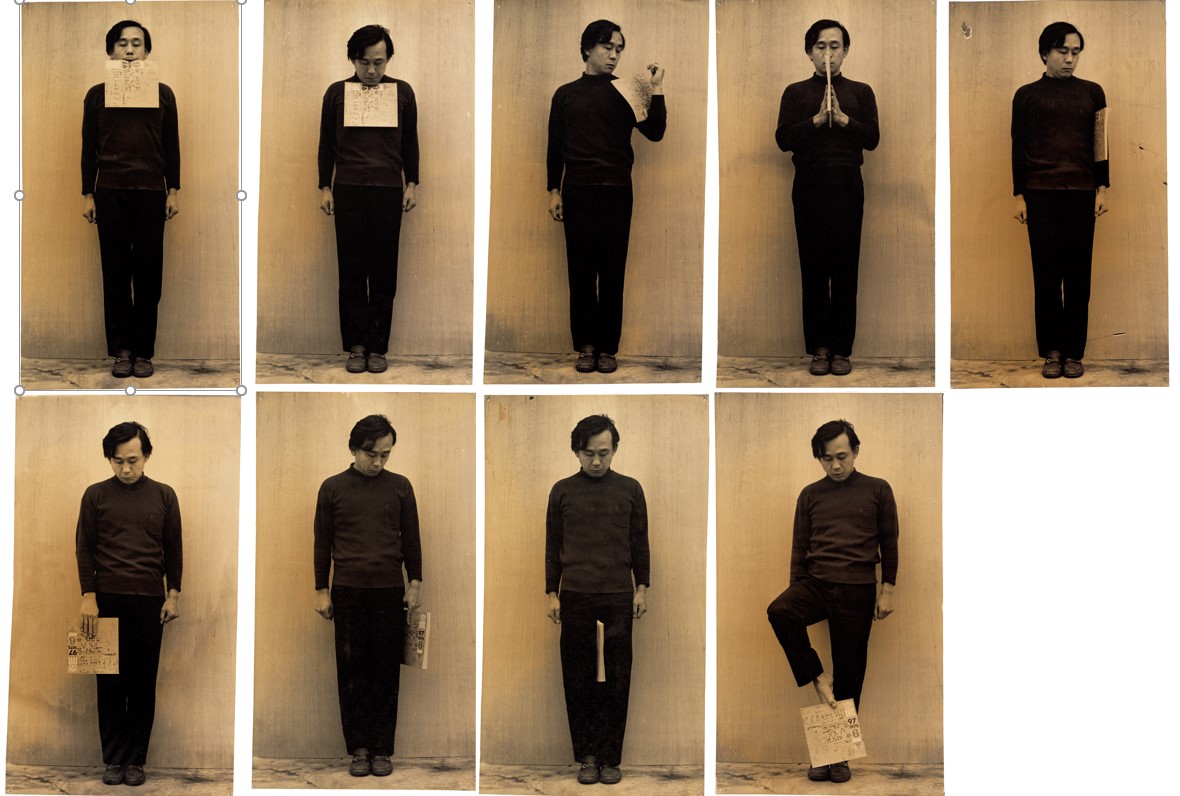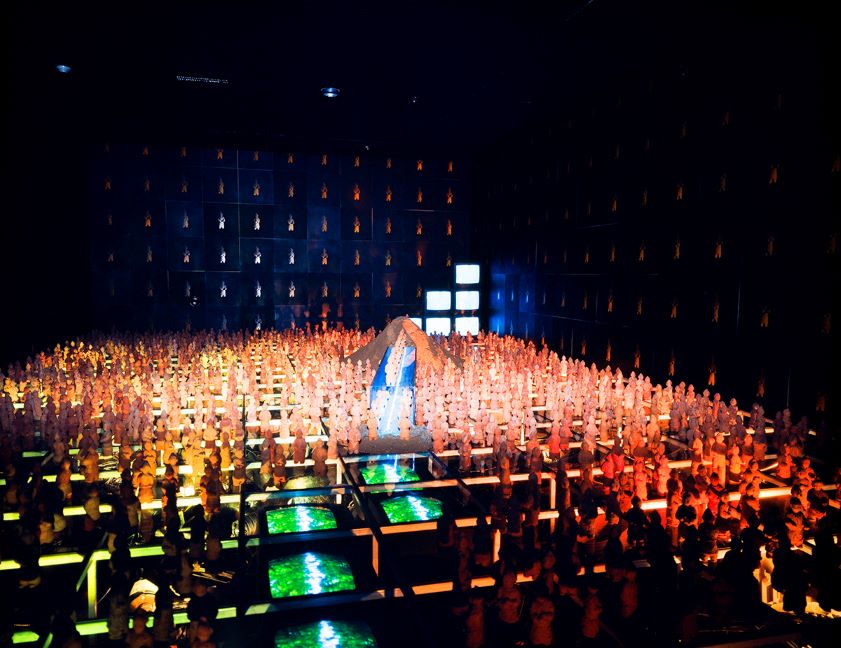
Geumgang Contemporary Art Festival—Inaugural Outdoor Exhibition, Brochure, 1980, MMCA Art Research Center Collection
Nature Art
* Source: MMCA
Related
-

Geumgang Contemporary Art Festival
The Geumgang Contemporary Art Festival was a regional art festival based in the Chungcheongnam-do Province. Its inaugural exhibition was held outdoors on Geumgang Sand Beach in Gongju from November 16 through 22 in 1980, and the festival was held once more indoors at the Daejeon Cultural Center from April 18 to 30 in 1981. Gongju native Rim Dongsik and Daejeon native Hong Myeongseop played leading roles in the festival. Although some Seoul-based artists took part in the festival, most participating artists from 1978 through 1980 were graduates from art universities in Chungcheongnam-do, including Mokwon University, Hannam University, and Kongju National University. Participating artists included Kang Huisun, Kwak Namsin, Ko Seunghyeon, Kim Yong-Ik, Kim Yeongho, Park Ingyu, Shin Dongguk, An Chiin, Oh Jayeong, Yu Geunyeong, Yu Dongjo, Yu Byeongho, Lee Kunyong, Lee Yungu, Lee Euncheol, Lee Jonghyeop, Rim Dongsik, Jeong Gilho, Jeong Deokyeong, Jung Jangjig, Jo Seonga, Ji Seokcheol, Heo Jingwon, and Hong Myeongseop. The Geumgang Contemporary Art Festival was one of several contemporary art festivals held in Daegu, Seoul, Gwangju, and other cities in between the mid-1970s and the early 1980s. The festival aimed to resist the insular nature of local art scenes, discover new artists, and revitalize local art communities. According to its founding statement, the Geumgang Contemporary Art Festival uses the river name “Geumgang” instead of a city name because it is an art event for artists from the Gongju and Daejeon regions and it symbolizes “the spirit of artists who are searching for precious and elevated concepts, such as beauty, elegance, purity, simplicity, lucidness, and brightness and who study them with a scholarly attitude.” The festival also encouraged “young artists in their twenties and thirties who can actively present post-abstract art, installations, and performance art” from among those with connections to the Geumgang regions (born, raised, and working) to participate. A distinctive feature of the Geumgang Contemporary Art Festival is that it started with the premise of featuring outdoor works. At the third Daegu Contemporary Art Festival, participating artists presented performance art on the Nakdonggang River, but they used the outdoors as a mere venue for presenting their works. In contrast, as its subtitle “Outdoor Field Exhibition” suggests, the Geumgang Contemporary Art Festival considered the outdoor field itself as the most important element of art. Rim Dongsik, who played a crucial role in the founding of the festival, along with Ko Seunghyeon, Heo Jingwon, and Kang Huisun, established the YATOO outdoor field art research society in 1981. It studied outdoor art through fresh contact with nature and served as the seedbed of the birth of Nature Art in South Korea.
-

Korean Nature Artists' Association·YATOO
Korean Nature Artists' Association·YATOO is an organization formed by artists based in Gongju city and the Geumgang River region in the 1980s with Nature Art as their slogan. Its main members include Rim Dongsik, Ko Seunghyun, Kang Huijung, Lee Eungu, Hong Oh-bong, Mun Jeong-gyu, Koh Hyeonhui, Kim Haesim, Jung Jangjig, and Lee Jonghyup. In 1980, the first Geumgang Contemporary Art Festival was held by the Geumgang River in Gongju-si, Chungcheongnam-do Province. In June 1981, a research group known as the YATOO Outdoor Field Art Research Society was founded under the leadership of Rim Dongsik. YATOO means “projecting the artist’s thoughts into nature.” Starting in 1983, the members of YATOO infused the concept of Nature Art into the results of their creative activities based on the encounter between humans and nature. Later, they renamed the organization as Nature Art Research Association · YATOO and began actively embarking on a path to Ecological Art that foregrounded questions of environment and ecology through installations, performances, videos, and photographic materials. Around this time, Rim left the organization due to disagreement with his colleagues. In 1995, the remaining members, such as Ko Seunghyun and Lee Eungu, renamed the organization The Korean Nature Artists’ Association · YATOO, which is still active in natural spaces near Geumgang River and Yeonmisan Mountain in Gongju. Since 1991, it has hosted the International Nature Art Exhibition, and since 2004, it has organized the Geumgang Nature Art Biennale.
Find More
-

Performance Art
Performance Art refers to art that uses the human body and expressive body movements as an artistic medium. Since its first appearance in 1967, South Korean performance art has been called various terms such as “happening,” “event,” “performance art,” and “performance.” These various terms have resulted from performance art, a foreign art form, being redefined several times in South Korea in accordance with the conditions of a particular era. Therefore, each term implies the Korean peculiarity of a certain period. In particular, “haengyu misul (performance art)” was interpreted as a major experimental art trend in South Korea until the mid-1980s. In the late 1980s, as collaborative activities with other art genres accelerated, the term “haengyu yesul” or “performance” was actively used and replaced the previous term, “haengyu misul.”
-

Installation
In a general sense, the term “installation” refers to the display or arrangement of artwork within an exhibition. In a stricter sense, the term “installation” can also refer to an art work specifically based in its wider display environment. Such installation art often attempts to enable the audience to become part of the new environment that the work creates. In this circumstance, the artwork becomes defined not only by its space, but also in terms of the relationship between the work, space and the audience.






